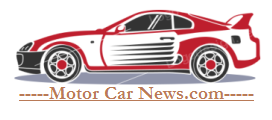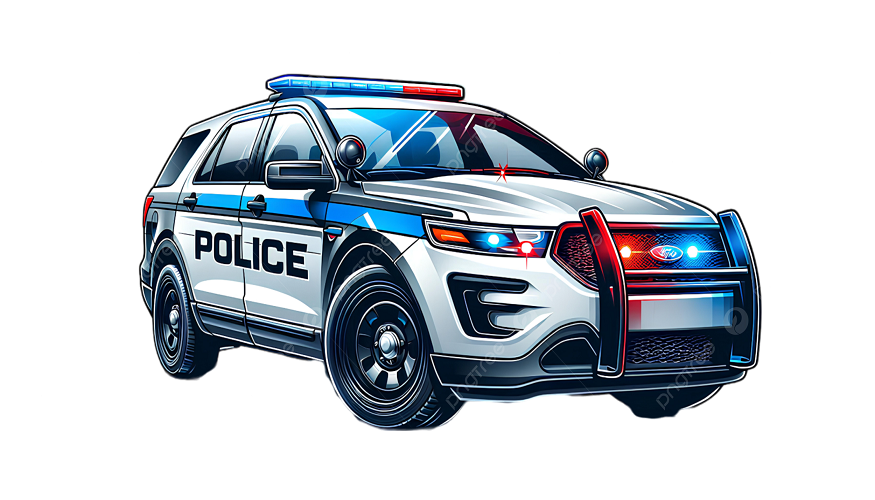Police car designs—specifically their graphics, markings, and visual elements—tend to differ between rural and urban environments. Sometimes, these differences are rather subtle, but they matter nonetheless.
These are consequential decisions, as a department’s fleet design will influence the fleet’s visibility, community perception, and operational requirements.
While urban police cars are built to be instantly recognizable in traffic, rural law enforcement vehicles need a different kind of design. We’ll dive into what makes them unique as we go further.
These differences will highlight how police car graphics dictate a lot more than just looks—they also serve a functional purpose. Officers have a much tougher time operating effectively in their unique environments without them.
Urban vs. Rural: The Purpose of Police Car Designs and Graphics
Police vehicles in busy cities need to be instantly recognizable so officers can respond quickly to emergencies while moving through heavy traffic.
Whether stationed at an intersection or responding to an incident, their design makes sure they’re always visible.
For urban departments, you’ll often notice design themes with bright colors, reflective elements, and large symbols.
These design elements ensure police vehicles remain highly visible at all times. In urgent situations, pedestrians, cyclists, and drivers must be able to identify law enforcement vehicles immediately.
Rural departments usually have different priorities.
Vehicles may need to stand out on highways, where visibility from a distance is critical, or they may need a more subdued surveillance or wildlife enforcement design.
Some sheriff’s offices opt for neutral tones or less reflective elements to help officers operate discreetly when needed.
Others use bold graphics to keep patrol cars visible on dark, remote roads. Hitting the right balance between visibility and discretion is key to rural law enforcement vehicle design.
Police Car Designs in Busy Cities
Most urban police vehicles are designed to be noticed.
Bold, reflective graphics are highly visible in crowded streets where pedestrians, cyclists, and drivers share the road.
To make vehicles immediately identifiable, metropolitan police car designs frequently feature high-contrast color combinations such as:
- Black and white
- Blue and white
- Black and yellow
Reflective decals serve a substantial function in metropolitan areas.
These decals increase visibility at night and in low-light circumstances. Then, people can identify patrol cars even when they’re parked.
Police departments frequently use huge, department-specific insignias on the sides and back of vehicles to fortify their presence.
The idea is to maintain a commanding presence while allowing civilians and suspects to identify law enforcement quickly.
Urban police vehicles often include markings that highlight their precise roles. For example, some city departments use unique striping or decals to identify traffic enforcement units.
Specialized vehicles, such as those for community outreach or task forces, may have distinct designs that reflect their purpose.
Rural Police Car Designs
Rural police vehicles require a different graphic design technique.
Sheriff’s departments and state patrol agencies often operate across large geographic areas with changing terrain.
Highway patrol vehicles rely on high-visibility colors and reflective striping to stand out on dark roads, much like urban patrol cars navigating busy streets.
In contrast, specialized units involved in drug enforcement, wildlife monitoring, or tactical operations require a more subtle look to avoid unwanted attention.
Some rural police agencies adopt natural-toned graphics to blend into wooded areas, while others minimize reflective details to stay less visible at night.
Officers working in conservation zones or investigating agricultural crimes often find that a more discreet vehicle design helps them observe suspects without being easily detected.
Sheriff’s office vehicles tend to differ in appearance from municipal police vehicles. Many sheriff’s departments use gold, brown, or tan lettering and striping instead of bright colors.
This distinction helps differentiate county-level law enforcement from city agencies while still ensuring visibility when necessary. Some sheriff’s offices also use a two-tone design, where the lower half of the vehicle is a darker shade than the top.
Markings and Insignia in Police Car Designs
Many city police vehicles are marked with distinctive department emblems and unit numbers. Bold lettering displaying the city’s name reinforces jurisdiction and helps with public identification.
Some larger departments add emergency contact information or crime tip hotlines on the vehicle’s rear to encourage public engagement.
Rural police vehicles may have more understated markings. You might notice some sheriff’s departments use minimalist designs, including only the department name and badge, without excessive striping.
Law enforcement vehicles prioritize usefulness over public engagement in smaller communities, as officers are already known to local residents.
State police and highway patrol vehicles typically follow a uniform design across the state.
They tend to incorporate features like:
- State outlines
- Official seals
- High-visibility striping
Unlike city police cars, which may display precinct information, rural highway patrol vehicles maintain a consistent design throughout the region.
Lighting and Visibility
Urban police vehicles use bright rooftop light bars and directional lighting systems to navigate heavy traffic.
Flashing lights must be visible from several angles. Then, other drivers know to yield during emergency responses. Some city patrol cars also incorporate grille-mounted and additional rear lighting to enhance visibility in heavy traffic.
Rural police vehicles often have different lighting for different purposes.
Spotlights mounted on the side of the vehicle help with searches in dark areas, while floodlights on the rear or roof illuminate nighttime operations.
A lot of rural roads lack street lighting, so these vehicles need more self-sufficient lighting systems to help officers in low-visibility environments.
Some rural agencies also use lower-profile light bars to reduce visibility during surveillance. This way, vehicles don’t attract unnecessary attention when parked off-road.
Examples of Urban and Rural Police Car Designs
New York City’s police department has one of the most recognizable vehicle designs in the country. The NYPD’s white patrol vehicles, accented with blue striping and large department logos, are designed for instant recognition.
Reflective elements ensure they remain visible, helping maintain a noticeable police presence in New York’s high-traffic areas.
Texas state trooper vehicles are designed with a more low-profile look.
You might notice they drive dark-colored vehicles with silver or gold lettering. This setup helps patrol vehicles stand out to motorists without being too intrusive in an open countryside setting.
Sheriff’s departments in states like Montana and Wyoming often use neutral-colored cars with minimal striping that aren’t overly attention-grabbing.
Some departments even use unmarked units with concealed lighting to conduct traffic enforcement without giving drivers too much notice.
Ready to Update Your Fleet?
Are you designing a fleet for a city department, a sheriff’s office, or a state patrol agency?
No matter where your department is or its design goals, working with experienced professionals is the trick to aligning each vehicle’s graphics with its function.
For expert help with police car designs, contact Graphic Designs International.

